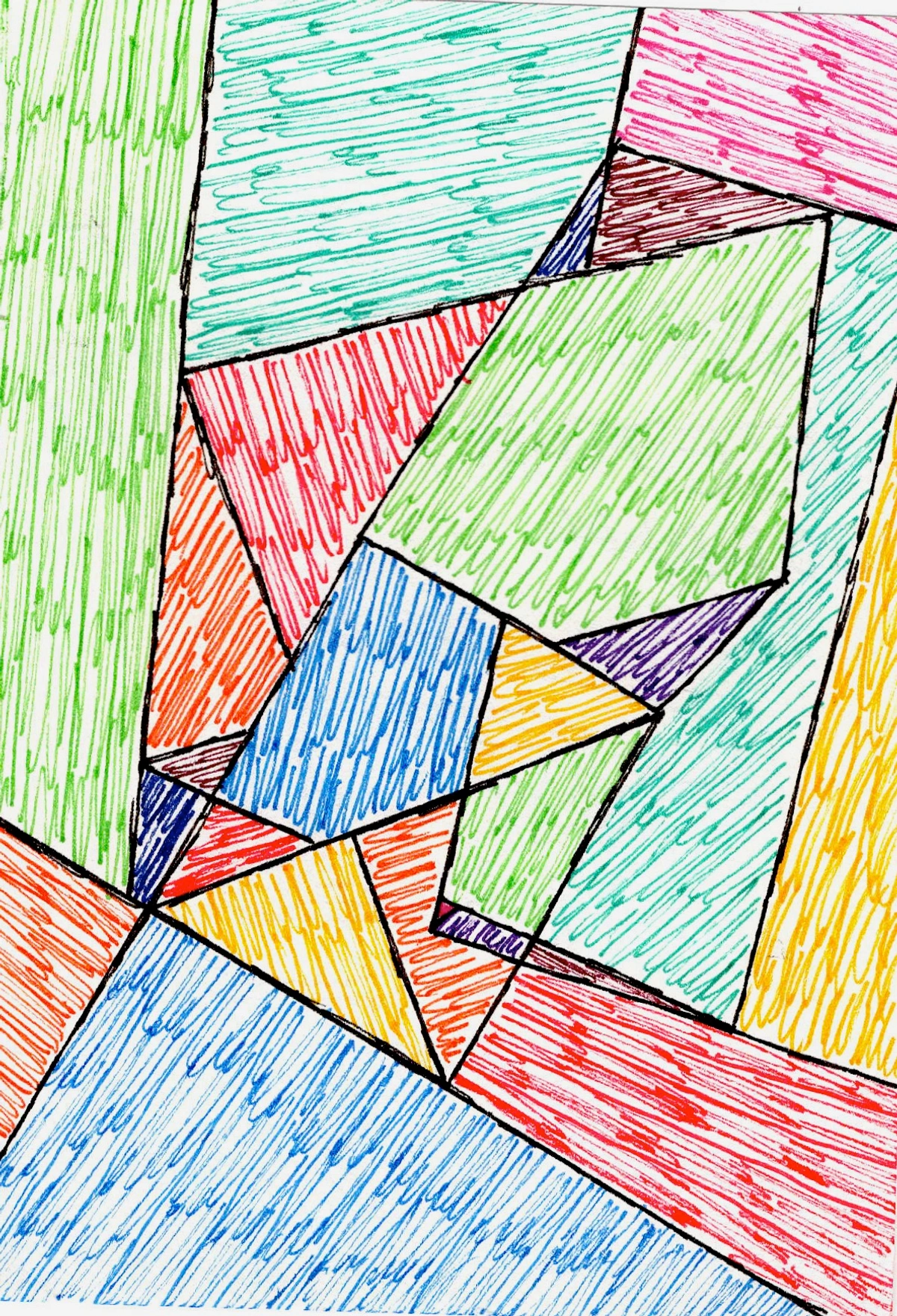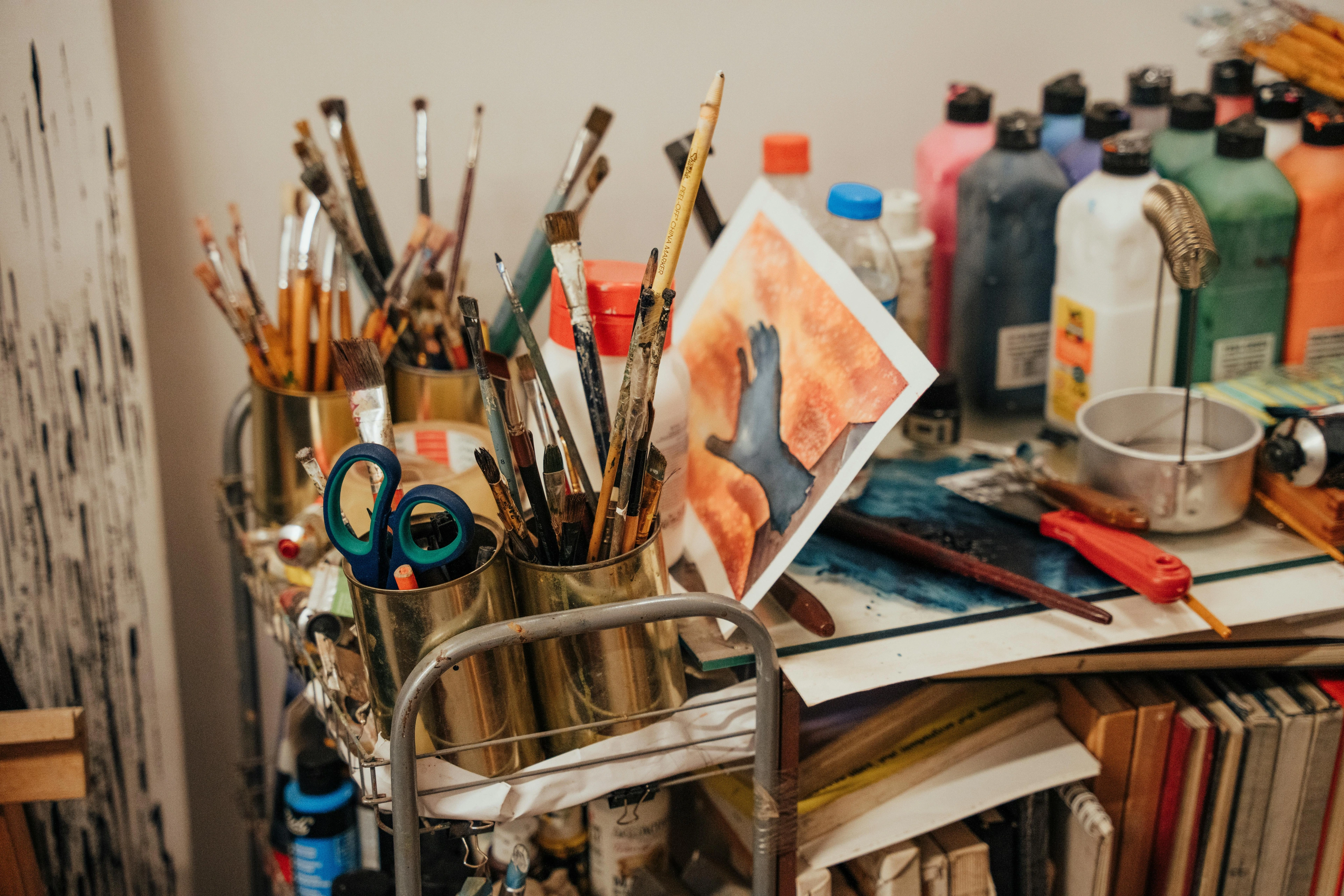
Master Your Medium: The Ultimate Guide to Choosing Art Paper
Unlock your art's full potential! This ultimate guide dives deep into paper's weight, texture, sizing, and archival qualities, revealing how to pick the perfect paper for any art medium, from painting to digital prints. Learn to make choices that empower your vision and ensure your art endures.
Master Your Medium: The Ultimate Guide to Choosing Art Paper
I used to think paper was just… well, paper. A simple canvas, a surface, a blank slate – whatever I called it, it was merely there to hold the paint or ink. Oh, how wrong I was! It’s almost embarrassing to admit how many frustrating hours I spent wrestling with my mediums, blaming my skills, when the real culprit was often the flimsy, non-committal surface beneath my art. It's like trying to run a marathon in flip-flops; you can, but why make it so hard on yourself? This journey from confusion to clarity has been a significant part of my own artistic evolution, a path I've documented in my artistic timeline.
So, you want to elevate your art, understand your materials, and ensure your creative vision truly shines? Finding the right paper for your art medium isn’t just about being particular; it’s about unlocking the true potential of your materials and, honestly, your own artistic flow. It’s a foundational decision, a conversation between you, your medium, and the very ground your creativity stands on. And trust me, once you get it right, it feels like magic. It's truly a game-changer for your entire creative journey, shaping everything from initial strokes to the lasting impression of your finished piece. Let’s peel back the layers and truly understand the what, why, and how of choosing the right paper for your unique artistic vision, because paper isn't just a surface; it's an active partner in your creative process.
The Unsung Hero: Why Paper Isn't Just "Paper"
Paper isn't merely a backdrop; it's an active participant in your creative process. Its inherent characteristics dictate how your medium behaves, how colors sing (or don't), and how long your masterpiece will last. For me, exploring these nuances has been a huge part of my own artistic evolution, a journey from frustration to genuine understanding. Truly, what you hold in your hands before the first stroke can absolutely make or break the entire experience.
Paper Weight: The Foundation of Your Artwork
Ever stared at a paper weight number and wondered what it really means for your art? When you see paper described with numbers like 180 gsm or 140 lb, what does that actually mean for your art? GSM stands for grams per square meter, a universal measure of paper's density. The higher the number, the thicker and heavier the paper. This heft isn't just about feeling substantial; it provides the structural integrity needed to withstand various artistic abuses.
Now, a quick clarification: while a higher gsm generally means more structural integrity, the old "lb" (pound) system is a bit trickier. It refers to the weight of 500 sheets of a specific, standard size of that paper type, which varies by paper category (e.g., bond, text, cover). This means a 140 lb watercolor paper isn't directly comparable to a 140 lb drawing paper in density or thickness. It's why I prefer thinking in gsm – it’s a more straightforward, universal comparison.
It’s also important to remember that 'weight' isn't always directly proportional to 'thickness' across different paper types or manufacturers. A denser cotton rag paper might feel more substantial at a lower gsm than a fluffier wood pulp paper of the same weight. Think of it like comparing a dense oak plank to a lighter, yet equally sturdy, engineered wood panel – both strong, but different compositions and tactile experiences. This difference in composition and thickness can subtly affect the "hand" or feel of the paper, influencing how it responds under your brush or pencil. Does it feel crisp, supple, or stiff? This tactile experience is a subtle but profound part of your interaction with the material, guiding your movements and affecting the spontaneity of your marks.
For watercolors, inks, or anything involving significant moisture, you want something substantial, typically 300 gsm (140 lb) or more. Anything less, and you're risking warping, buckling, and a general artistic meltdown – I've definitely had pieces I loved turn into sad, wavy relics because I scrimped on paper weight. For sketching with pencil or charcoal, lighter papers (around 90-120 gsm) are perfectly fine, as they don't face the same moisture challenges.
So, what weight will give your next piece the backbone it deserves?
Texture (Surface): The Feel of Your Future
This is where things get really interesting, and it’s a topic I’m quite passionate about – I even have an article dedicated to the definitive guide to understanding texture in art! Paper surfaces generally fall into three camps, each offering a unique dialogue with your chosen medium:
- Hot Press: Smooth as a baby’s bottom, or a freshly polished mirror. This ultra-smooth surface is created by pressing the paper between heated rollers, making it less porous. It's perfect for fine detail work, intricate ink drawings, and smooth washes where you want minimal texture interference. It doesn't absorb water as quickly as its counterparts. Now, this can be a blessing, offering more time to blend and manipulate paint directly on the surface, but also a slight curse if you're not used to its slower absorption, as it can lead to frustrating pooling, pilling of the paper, or a lack of immediate vibrancy because the pigment just sits on top without sinking in deeply. Its smooth surface also means softer mediums like charcoal or pastel might not grab as well and could be prone to smudging if you're not careful. It's fantastic for detailed ink work. For instance, artists like Albrecht Dürer, famous for his intricate engravings, relied on papers that could hold the finest lines with crisp precision.
- Cold Press: My personal go-to for many things. It has a slight texture, or "tooth," that grabs pigment beautifully. Imagine it like tiny valleys and peaks on the surface; these microscopic crevices catch and hold onto paint or pastel particles. This allows pigment to settle deeply, creating a vibrant, luminous effect, and makes it great for watercolors, acrylics, and pastels, offering a nice balance between detail and expressive texture. The tooth allows for beautiful layering and helps prevent washes from becoming muddy. If you're a fan of exploring texture in abstract paintings, this is your friend.
- Rough: As the name suggests, this paper has a pronounced, uneven texture. Think of it as a miniature, abstract landscape before you even start, or perhaps the rugged bark of an ancient tree! It's fantastic for expressive washes, dry brush techniques, and really letting the medium sing, as the pigment settles into the deep indentations, creating rich, granular effects that are truly unique. J.M.W. Turner, the master of atmospheric watercolors, often embraced the raw textures of rough paper to achieve his sublime effects.
So, what kind of texture will speak to your next piece?
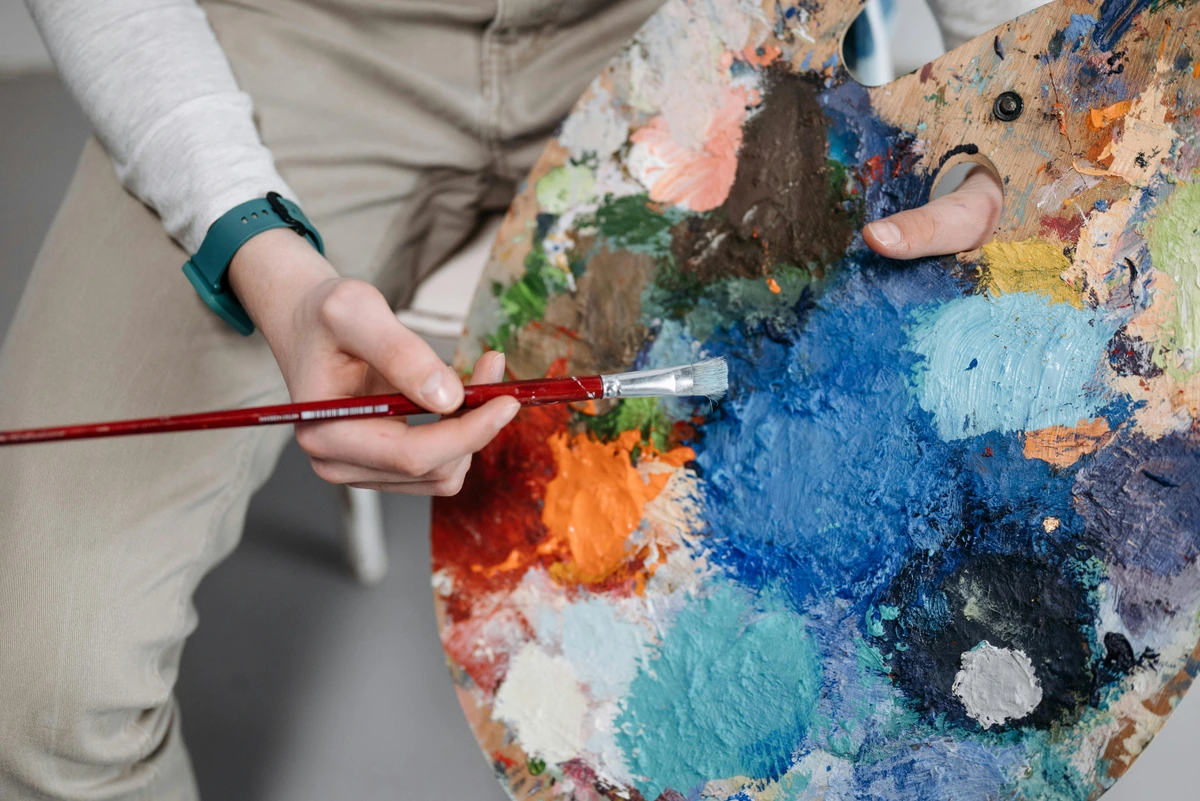
Sizing: The Invisible Shield
Ever wondered why some papers seem to drink up your ink instantly, causing it to feather, while others let your watercolors dance on the surface? Here's a concept often overlooked but absolutely crucial, especially for wet mediums: sizing. Paper isn't just cellulose fibers; it's often treated with a substance (like gelatin or synthetic polymers) called sizing. This can be either internal sizing (mixed into the pulp during manufacturing) or external sizing (applied to the surface after the sheet is formed).
Think of internal sizing as reducing the overall thirst of the paper's core fibers, making it less absorbent throughout the sheet. External sizing, on the other hand, primarily impacts the very surface, creating a protective barrier that allows wet media to sit and be manipulated for longer. This often leads to more vibrant colors because the pigment remains on top rather than sinking deep into the fibers.
Different types of sizing agents, like traditional animal gelatin or modern synthetic polymers, can subtly alter how a paper feels and reacts over time. Gelatin sizing, for instance, offers a unique tooth and responsiveness that many watercolorists adore, while synthetic sizings can offer greater consistency and often be vegan-friendly. These choices add another layer to discerning artists.
Sizing controls the paper's absorbency. Think of it as an invisible shield: a heavily sized paper is less absorbent, preventing liquids from soaking in too quickly. This is vital for preventing ink from feathering or watercolors from bleeding uncontrollably, allowing the pigment to sit on the surface and maintain its vibrancy. For instance, strong sizing is what allows you to achieve those crisp, defined lines with a fine-tip pen or marker, or create delicate glazes with watercolor without the color immediately sinking in. Less sizing means more absorbency, which can be desirable for certain effects (like soft edges and blooming washes) but often leads to buckling and less vibrant color because the paper becomes oversaturated, allowing pigments to sink too deep into the fibers. This is particularly important when working with inks, markers, and washes where crisp lines and controlled spreading are key. I still remember the time I tried an intricate ink drawing on unsized paper – it feathered into an abstract mess, much to my chagrin! Another time, a delicate watercolor wash on poorly sized paper bloomed uncontrollically, turning what I intended to be a subtle transition into a muddy disaster. Beyond immediate behavior, proper sizing can also play a subtle role in the long-term preservation of your work by controlling how external elements penetrate the paper fibers. So, how much control do you want over your liquid mediums?
Composition & Acidity: The Long Game for Your Legacy
This is less about how your art looks today and more about how it lasts tomorrow. This often overlooked detail determines if your art will become a cherished heirloom or a brittle disappointment.
Acid-free paper is crucial. Cheaper papers often contain lignin, a natural polymer in wood pulp that gives paper its structural rigidity. The problem is, lignin eventually breaks down, turning the paper yellow, brittle, and essentially crumbling gently into history over time. It's like a wooden fence slowly rotting – inevitable decay. There are different types of lignin, some degrading faster than others, but ultimately, its presence means an expiry date for your artwork. I've had sketches from my early days that now look like ancient, forgotten scrolls – charming in a way, but definitely not how I intended them to be preserved! While 'acid-free' is a great start, 'archival quality' goes a step further. Archival quality papers are not only acid-free (meaning they have a neutral pH, typically around 7 or slightly higher) but are also commonly made from 100% cotton rag (pure cellulose fibers), rather than lignin-containing wood pulp. Cellulose, the main component of cotton, is much more stable than lignin, resisting degradation for centuries. This is why master drawings from the Renaissance, often on rag papers, still exist today – a testament to quality materials and traditional cylinder mold machines, which create stronger, more dimensionally stable sheets.
Beyond simply being acid-free, many archival papers are also buffered. Think of buffering like adding a little alkaline 'insurance policy' to your paper. It means they have an alkaline reserve (often calcium carbonate) added to counteract any future acids that might migrate into the paper from the environment (like pollution) or from mounting materials (like acidic mat board). This added protection is like a silent guardian for your art's longevity, ensuring your artwork stands the test of time and resists environmental degradation for centuries. And speaking of the paper itself, the choice of pulp is fundamental: cotton rag for superior longevity and strength, wood pulp for affordability (though some modern wood pulp papers are acid-free), or even emerging sustainable options like bamboo or hemp. These different pulps have inherent properties that affect everything from texture to durability.
Yes, archival papers can be more expensive, but isn't your creative effort worth protecting, especially if someone is buying your art? What legacy do you want your art to leave?
Speaking of lasting impact, considering the significant water usage and chemical processes involved in traditional paper manufacturing, opting for eco-friendly alternatives (like those made from recycled content, or produced with sustainable practices like minimal chlorine bleaching) is a powerful statement for your environmental legacy too.
Grain Direction: A Subtle Influence
While not always immediately obvious, paper has a grain direction – the alignment of its fibers, formed during the manufacturing process. This can subtly affect how your paper behaves. Paper tears more cleanly and folds more easily along the grain. To find the grain, gently try to bend a corner of your paper in both directions. It will bend more easily and cleanly along the grain. Or, if you're feeling brave (or have a scrap piece), try tearing it – it will tear straighter along the grain.
Knowing this can be especially important if you plan to stretch paper for watercolors (to minimize warping). When you stretch paper, you wet it and tape it down; if you stretch against the grain, the fibers will swell unevenly across the sheet, creating tension that can lead to buckling or tearing when dry. Stretching with the grain allows for more uniform expansion and contraction. For artists, knowing the grain direction can be important if you plan to stretch paper, fold it for a specific project, or even when considering how it will react to moisture. For instance, if you're dry brushing a landscape, brushing against the grain might pick up more pigment unevenly, creating a rougher, broken effect, whereas brushing with the grain could give a smoother, more consistent line. And for those who enjoy folding their paper for unique sculptural pieces or bookbinding, folding with the grain is essential to avoid cracking and ensure a clean crease, as folding against the grain puts undue stress on the fibers. It's also something to consider if you're applying masking fluid; I once peeled masking fluid off against the grain and ended up with a frustratingly minor surface tear – a little trick the paper plays on you when you're not paying attention! This inherent fiber alignment also plays a role in the paper's dimensional stability, influencing how it expands or contracts with changes in humidity. This is simply a fancy way of saying it helps your large, complex pieces stay flat and true over time, which is especially critical if you live in an environment with fluctuating temperatures and humidity. It’s these subtle details that separate good paper from great paper.
What will your grain reveal?
Brightness & Whiteness: Setting the Stage for Color
Finally, a subtle but significant characteristic: brightness or whiteness. This refers to how light-reflective the paper surface is, and it profoundly impacts how your colors are perceived. A brilliant white paper will make colors pop and appear more vibrant, which is often desirable for abstract or highly chromatic work. It acts like a spotlight, intensifying every pigment.
Alternatively, a warmer, off-white paper can lend a subtle, antique feel and can even shift the perceived temperature of your colors – making cool blues feel a bit warmer, or warm reds feel even more fiery. It's like choosing the perfect lighting for a photography shoot; the subtle undertones of the paper can enhance or mute the very essence of your pigments, setting the overall mood before you even apply the first stroke. Be aware that some papers achieve their dazzling whiteness through optical brightening agents (OBAs), which can degrade over time, leading to yellowing. For archival work, many artists prefer OBA-free papers. Remember that different light sources (natural daylight, incandescent, LED) can also subtly alter how you perceive the paper's whiteness and, consequently, your colors. This choice directly influences the psychology of color in abstract art. How will you set the stage for your palette?
Opacity: The Hidden Depth
Beyond how colors appear, the very substance of the paper can also influence your work. Another characteristic that's often overlooked, but can be a real game-changer depending on your technique, is opacity. This refers to how much light passes through the paper. A more opaque paper is typically thicker and denser, preventing ghosting or bleed-through from mediums on the reverse side, which is crucial if you're working double-sided or layering elements like collage. For instance, when creating mixed media pieces, you wouldn't want the texture or color of a glued-down element to show through an opaque layer of gouache.
Thinner, more translucent papers, while not ideal for heavy wet media, can offer unique effects for tracing, layering, or creating subtle luminosity, and can even affect the perceived depth of your colors, making them feel richer or more ethereal depending on what's beneath. Understanding opacity is the final piece of the puzzle for mastering your paper choice, influencing the overall formation and integrity of your artwork. Are you looking for hidden depths or transparent layers?
Matching the Medium to Its Perfect Mate
Now that we understand the fundamental qualities of paper, let's explore how these translate to specific artistic mediums. This isn't a rulebook carved in stone, mind you, but more like a friendly guide from someone who's made a lot of "oops" moments and found what genuinely works in their own studio.
Watercolor & Gouache: The Thirsty Ones
These watery wonders demand paper that can drink up liquid without turning into a soggy mess. Believe me, I used to try to paint watercolors on printer paper – don't judge! You need heavy paper, ideally 300 gsm (140 lb) or more, to handle the significant moisture without warping excessively. Cold press is a popular choice for its slight tooth and absorbency, which allows pigment to settle beautifully and layers to blend without becoming muddy, creating those lovely nuanced washes we all adore. The surface texture helps to suspend the pigment, creating vibrant, luminous washes that really sing. The specific sizing on watercolor paper is key here; it controls how the water and pigment interact, influencing effects like soft blends, sharp edges, backruns, and how easily you can lift color. Rough paper is also excellent for vibrant, textured washes, as the deep texture holds even more water and pigment, allowing for expressive, granular effects. If you're looking for specifics, I've got a whole rundown on the best watercolor paper for artists.
Ready to make your watercolors sing?
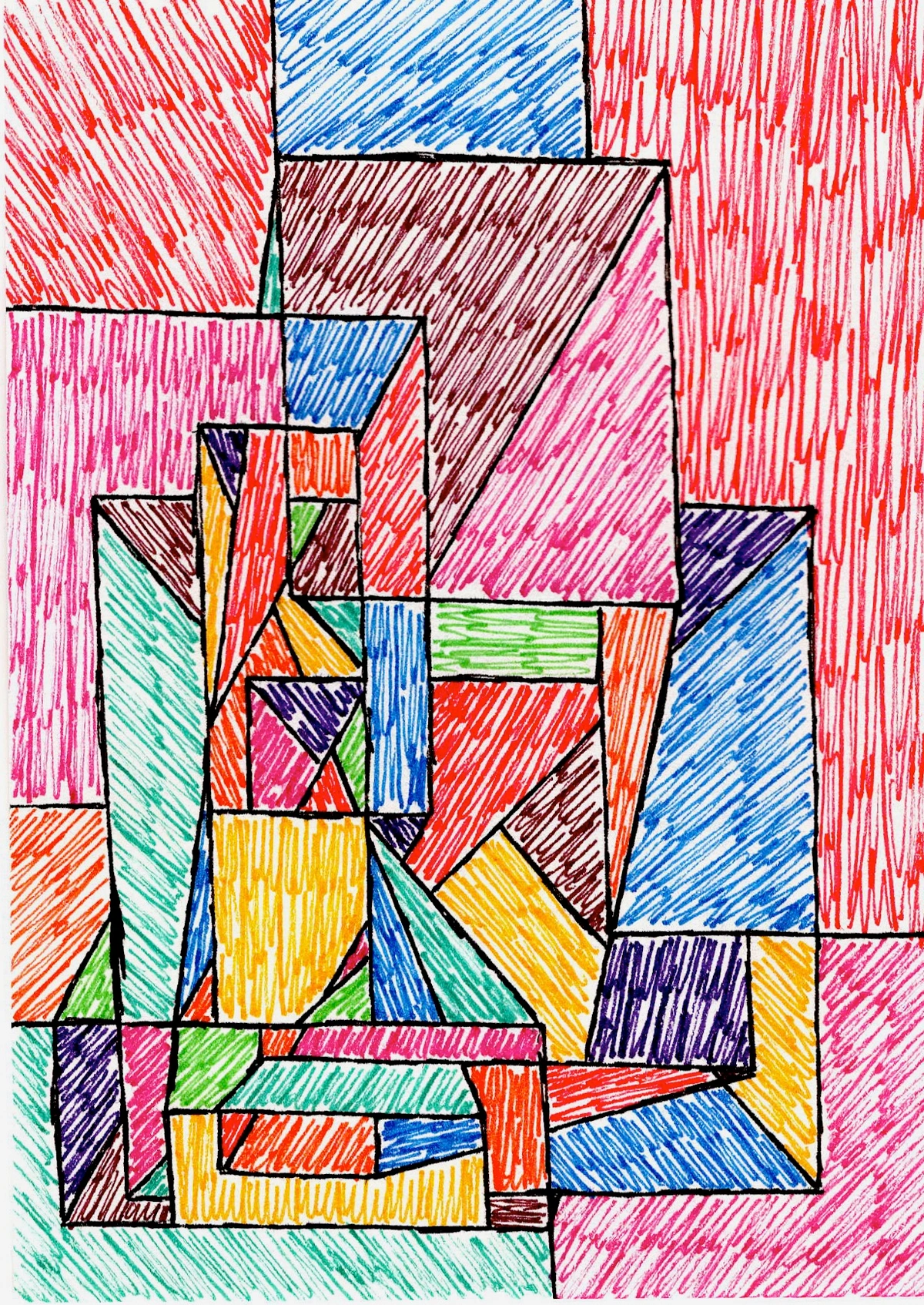
Acrylics: The Adaptable Allies
Acrylics are quite forgiving, which is why I love them for exploring texture. You can use them on a wide range of surfaces, but for paper, look for something with a bit of body – 180 gsm (80 lb) and up. Acrylic paper is often specially treated or sized to prevent too much absorption, allowing the paint to sit on the surface and maintain its vibrancy and workability. Both cold press and hot press can work, depending on whether you want texture or smooth blends. For thicker applications or impasto, you'll still want a heavier paper (e.g., 300 gsm+) to prevent buckling, because the sheer weight and moisture content of the paint require more structural integrity from the paper.
While heavier watercolor paper can work beautifully for acrylics, dedicated acrylic paper often provides a surface specifically engineered for better paint adhesion and controlled absorption. This can be particularly beneficial for maintaining the vibrancy, flexibility, and texture of opaque acrylics over time. Think of it as using a general-purpose tool versus a specialized one – both work, but one might offer a slight edge for specific tasks. Remember, even within "watercolor paper," different brands offer subtle variations in sizing and texture, so don't be afraid to try a few!
What will you create with acrylics today?
Drawing Mediums (Pencil, Charcoal, Pastel): The Grabbers
These dry mediums rely heavily on the paper's tooth to grab and hold the pigment. Without enough tooth, your beautiful graphite or charcoal will just slide off, refusing to build up rich layers. And don't forget the subtle magic of paper color! A toned paper (grey, tan, or even black) can dramatically alter the perceived values and hues of your dry media. Imagine drawing a white charcoal highlight on black paper; it truly pops in a way it never would on white. This allows you to work with highlights and mid-tones more effectively, especially with charcoal and pastels, or even for adding depth to colored pencil drawings where the paper's undertone plays a crucial role in the final color temperature and the overall value range of your artwork.
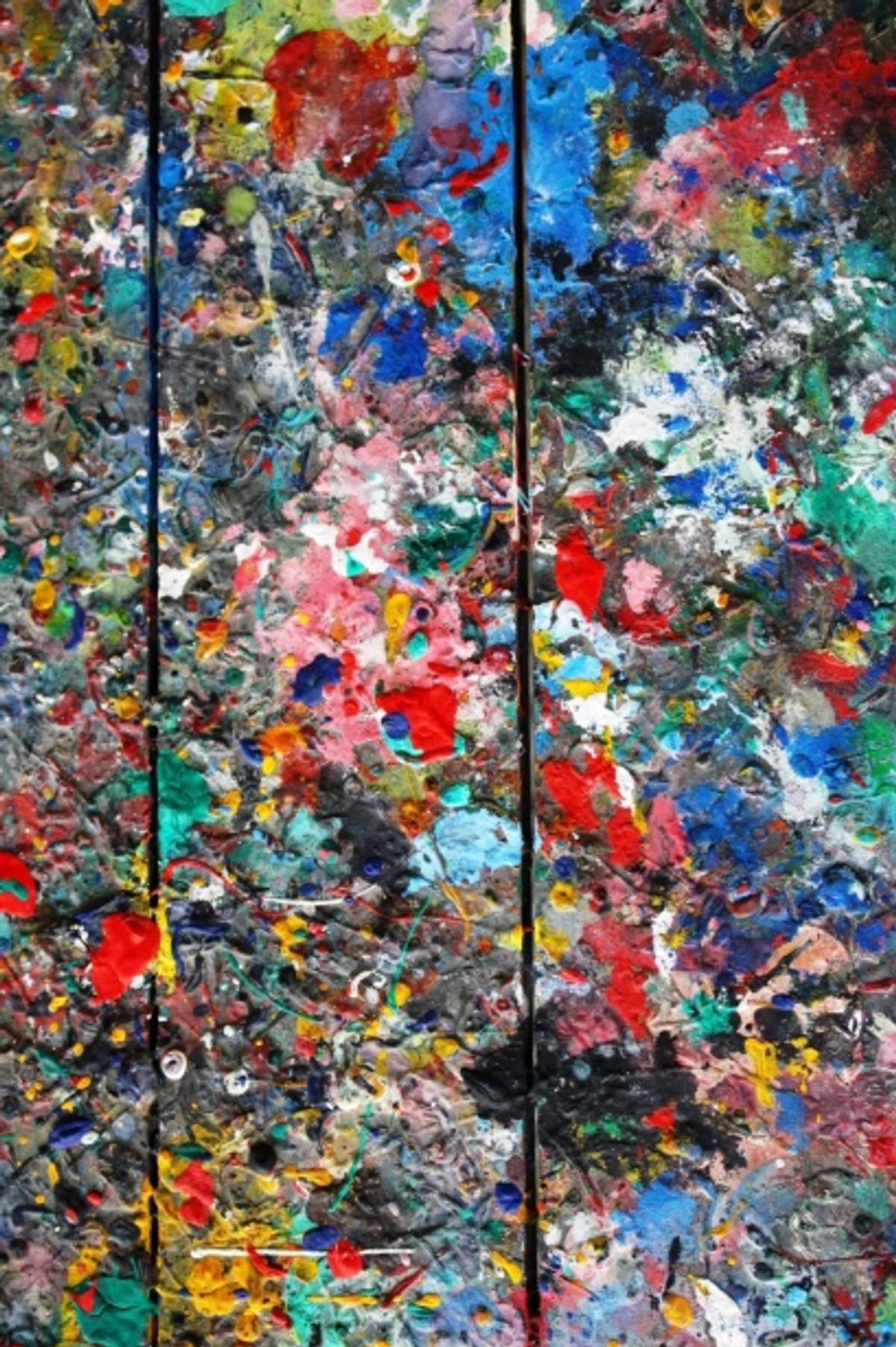
- Pencil & Ink: Lighter papers (90-180 gsm) work well. For incredibly detailed pencil work, aiming for those subtle tonal gradations and crisp edges, a smoother hot press or vellum surface is ideal, as its minimal texture allows for precise lines and gentle blending without interference. For ink, you want something with good sizing that won't feather or bleed, so a denser, often hot press, paper is key for crisp, controlled lines. This is where understanding color symbolism can subtly inform your choices, even with muted tones.
- Charcoal & Pastels: Ah, my favorites for adding depth to abstract paintings! These crave tooth. Cold press or even rough papers are excellent because their textured surfaces provide countless tiny ridges for the pigment to cling to. There are also specialized pastel papers with very pronounced textures (like sanded or velour surfaces, specifically Canson Mi-Teintes Touch or UArt sanded paper) designed specifically to hold a lot of pigment without smudging too easily, allowing for incredible layering and depth, and aiding in subtle blending or scumbling effects. Remember, for these powdery mediums, a light spray of fixative after completion is often a good idea to prevent smudging, and a paper with good tooth will help the fixative bind the particles more effectively.
What stories will your dry mediums tell?
Mixed Media: The Multitaskers
For those of us who can't stick to just one medium (guilty as charged!), mixed media paper is your best friend. These papers are specifically designed to handle a bit of everything – wet and dry mediums – without falling apart. Look for a substantial weight (250 gsm / 110 lb and up) and a versatile surface, often a cold press texture. It's like the Swiss Army knife of art papers! However, even our trusty Swiss Army knife has its limits; I've learned the hard way that overly aggressive scrubbing (like trying to lift dried acrylics with a stiff brush), heavy applications of masking fluid left on too long, or certain strong, water-based glues (like a thick PVA or craft glue used in extensive collage work without proper dilution or application) can still test its mettle, sometimes leading to surface lifting or irreversible damage. For instance, too much scrubbing on a less robust mixed media paper can cause the fibers to pill and lift, ruining the smooth surface. It’s all about knowing your tools and pushing them just enough, but not past their breaking point. My article on the definitive guide to mixed media in abstract art goes deep into this. What glorious combination of mediums will you explore next?
Calligraphy & Lettering: Precision Meets Flow
For the elegant strokes of calligraphy or the crisp lines of hand-lettering, paper is everything. You need a surface that allows ink to glide smoothly without feathering or bleeding, preserving the sharp edges and intricate details of your script. Hot press papers with a very smooth finish and good sizing are typically ideal. Their non-absorbent surface keeps the ink sitting on top, allowing for controlled flow and preventing it from soaking into the fibers too quickly. The smoothness also prevents nib drag, ensuring consistent ink flow. Thinner, more translucent papers can also work for practice, allowing you to trace guidelines beneath. Some calligraphers even prefer specialized, densely packed papers that can withstand repeated strokes without pilling. For certain pen types or markers, specialized bleed-proof marker papers can also be excellent. It’s all about precision here – a poorly chosen paper can turn a beautiful flourish into a messy blob, ruining hours of careful practice!
Will your next stroke be perfectly precise?
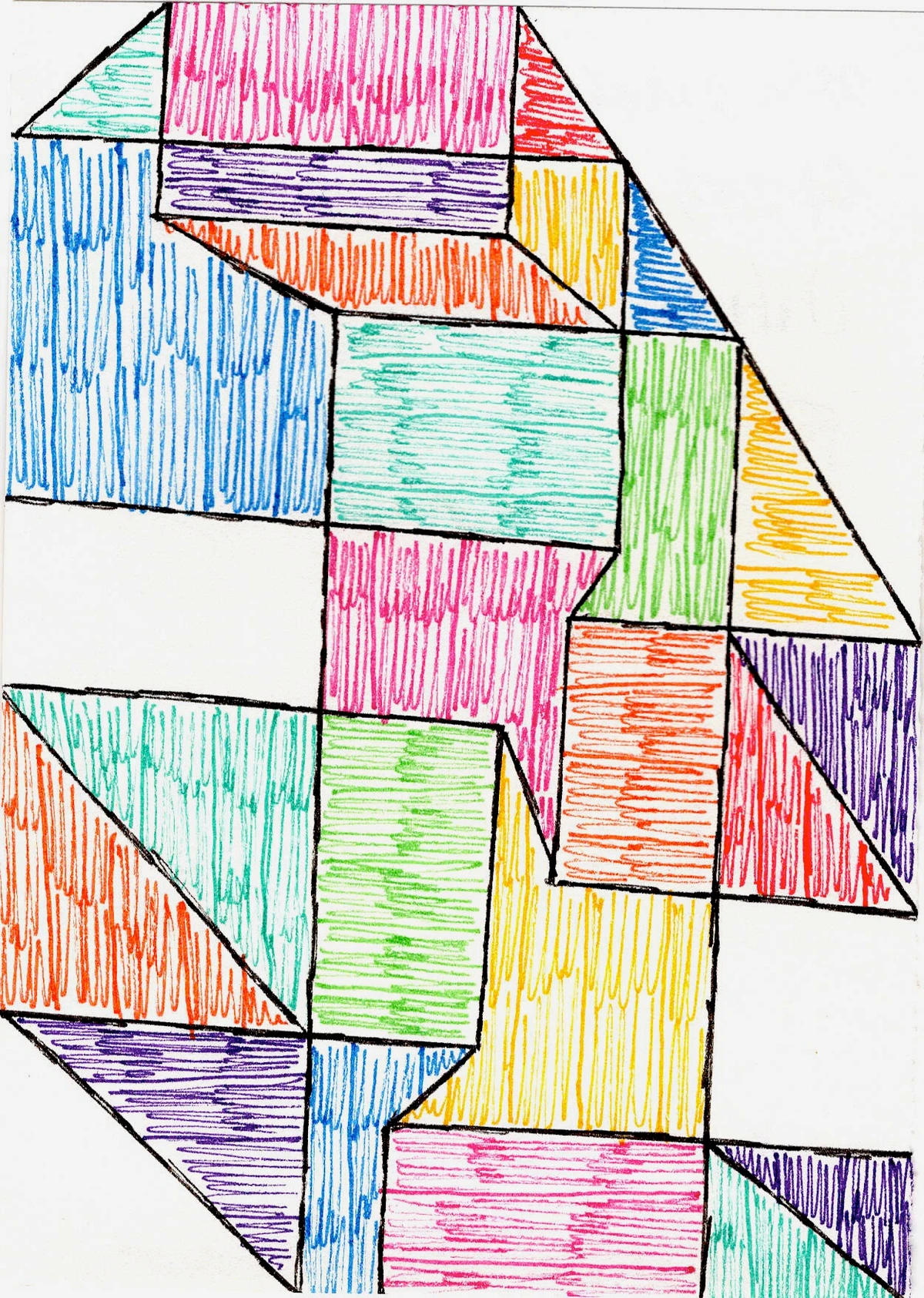
Digital Prints & Fine Art Giclée: The Modern Canvas
In today's artistic landscape, paper isn't just for traditional mediums; it's also crucial for presenting digital art and high-quality reproductions. For fine art prints and giclées, the paper choice profoundly impacts the final look and archival quality of your digital artwork. You're looking for archival quality, acid-free papers, often made from cotton rag, designed specifically for inkjet printing.
These papers come in various finishes – matte, satin, glossy, or textured (like a watercolor paper simulation) – each affecting how colors appear and how light interacts with the image. They often have special coatings that are specifically formulated to optimize ink absorption for maximum color gamut, sharpness, and longevity. This coating typically consists of multiple layers designed to receive and hold the ink droplets precisely, preventing spreading and ensuring vibrant, true-to-life colors. These coatings prevent fading, cracking, and water damage, ensuring your digital creations stand the test of time, just like a physical painting. Choosing the right paper here means thinking about how you want your digital art to feel in the physical world, creating a tangible connection for collectors, whether they're acquiring an original digital piece or a reproduction of my abstract art. It’s a bridge between the digital and the physical, ensuring the permanence of your pixels.
How will your digital art manifest in the physical world?
My Personal Paper Philosophy: Just Try It!
Honestly, all these guidelines are fantastic starting points, but nothing beats getting your hands dirty – or rather, getting your hands on some paper. While understanding the technical specs is crucial, the real magic happens when you translate that knowledge into your own hands-on exploration. I've learned more from experimenting with different types, making mistakes (oh, the many mistakes, like that time I accidentally used rough paper for an intricate ink drawing and it feathered everywhere!), and occasionally discovering a hidden gem than from any textbook.
Go to an art supply store and feel the paper. Pay attention to its texture, its weight. Buy single sheets of various types and weights, or perhaps a beginner's multi-pack with a few different paper types. See how your favorite mediums react. Does the watercolor spread like a dream, or does it stubbornly sit on top? Does your charcoal glide or scratch? Think about how the different textures influence your mark-making style – a rougher paper might encourage bolder strokes, while a smooth one begs for delicate lines. Experimentation is the fastest route to understanding. Just a fair warning though, diving into the world of paper can be a glorious rabbit hole, and you might just accumulate a small mountain of intriguing paper samples! It's a journey of discovery, much like my own evolution as an artist. What feels right for one person might feel utterly wrong for another, and that's perfectly okay. The goal is to find what empowers you and your unique artistic voice. So, what have been your most surprising paper discoveries? Share your thoughts and experiences; we're all learning here!
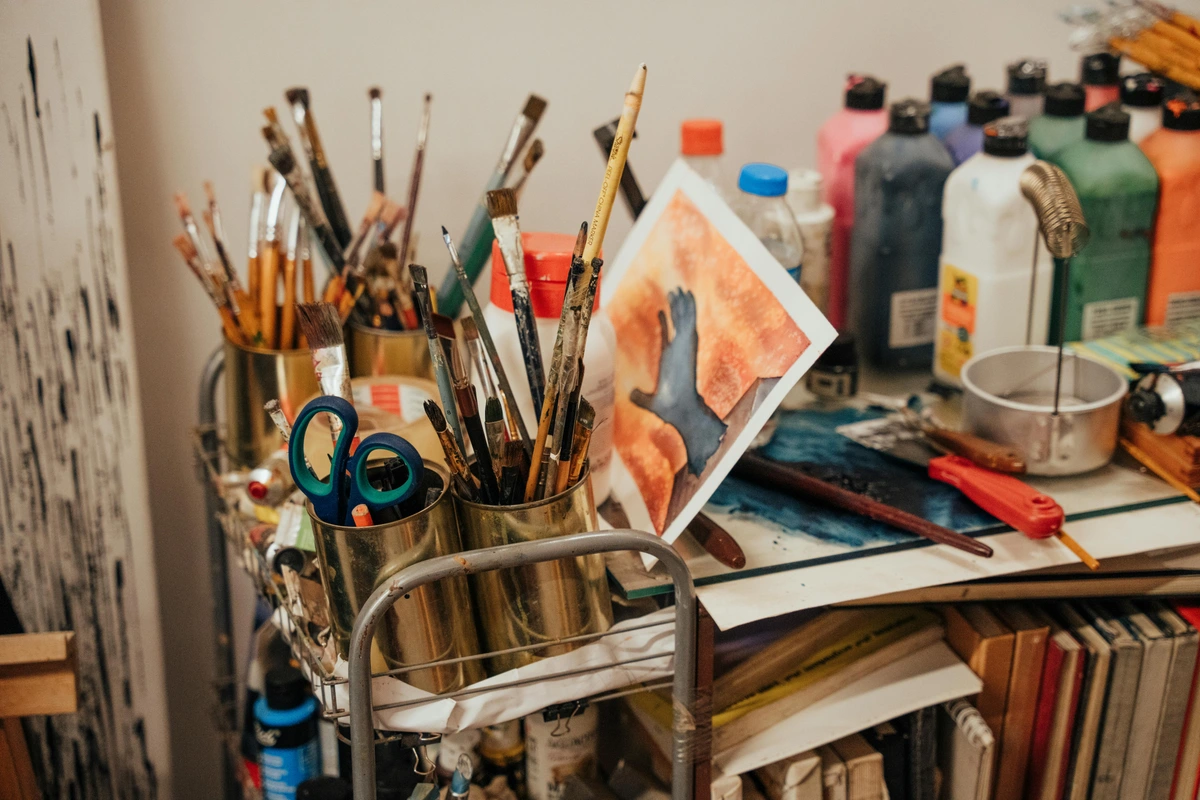
Frequently Asked Questions About Art Paper
Got burning questions about paper? I hear you! Here are some common ones that pop up in conversations with fellow artists:
What's the main difference between cold press and hot press paper?
Cold press paper has a textured surface, often called "tooth," which is great for grabbing pigments and creating expressive textures, especially with watercolors and pastels. In my experience, it absorbs water more readily than hot press. Hot press paper, on the other hand, is very smooth, making it ideal for fine details, intricate ink drawings, and precise washes. It offers less absorbency, which can give you more time to blend and manipulate paint on the surface, but also requires a bit more finessing to avoid pooling.
Why is acid-free paper important for art?
Acid-free paper is chemically stable, meaning it won't yellow, become brittle, or degrade over time due to acids in its composition. Using acid-free paper ensures the longevity and preservation of your artwork, protecting your creative efforts for years to come. Imagine spending hours on a masterpiece, only for it to crumble into dust in a few decades – that's the sad reality without acid-free paper. It safeguards your art against the natural decay that acidic papers inevitably experience, ensuring your legacy endures.
Can I use watercolor paper for acrylics?
Yes, definitely! Heavier watercolor papers (300 gsm / 140 lb and up) are quite robust and can handle acrylics beautifully, especially for washes and moderate applications. However, in my experience, dedicated acrylic paper often provides a surface specifically engineered for better paint adhesion, flexibility, and controlled absorption. This can be particularly beneficial for maintaining the vibrancy, flexibility, and texture of opaque acrylics over time. Think of it as using a general-purpose tool versus a specialized one – both work, but one might offer a slight edge for specific tasks. Remember, even within "watercolor paper," different brands offer subtle variations in sizing and texture, so don't be afraid to try a few!
What’s the best paper for markers, especially alcohol-based ones?
For markers, especially alcohol-based ones, you're looking for paper that prevents bleed-through and allows for smooth blending without feathering. Specialized marker paper or marker pads are specifically designed for this. They are usually smooth, somewhat thin but densely packed, and often have a special coating or heavy sizing that allows the ink to sit on the surface for vibrant color and easy layering, preventing it from soaking into the fibers too quickly. This also minimizes "ghosting," where the ink shows through to the other side or subsequent pages. For crisp lines and no bleed, it's a game-changer.
Do oil pastels need special paper?
While oil pastels are quite versatile, they truly shine on papers with a bit of "tooth" or texture to grab and hold the pigment. Cold press watercolor paper, pastel paper, or even heavier drawing papers work well. The texture allows for rich layering and prevents the waxy pigment from simply sliding around and losing its vibrancy; the tooth provides tiny crevices for the pigment to cling to, which also helps in creating subtle blending and scumbling effects. For really intensive layering and a pronounced, textured effect, some artists even love working on sanded pastel papers for incredible depth and adherence, but that's a whole other level of commitment!
What's the best paper for a beginner artist?
For beginners, I usually recommend a versatile mixed media paper (around 250 gsm / 110 lb and up) or a good quality cold press drawing paper (180-250 gsm). Brands like Strathmore 400 Series Mixed Media or Canson XL Mix Media are great, affordable starting points. These offer a forgiving surface for a range of mediums and allow you to experiment without breaking the bank or encountering too many paper-related frustrations. I'd also suggest picking up a small pad of watercolor paper and a drawing pad to try a few different types, as hands-on experience is key to figuring out what you love to do.
What's the difference between drawing paper and sketchbook paper?
Generally, drawing paper refers to individual sheets of higher quality, often thicker and with specific "tooth" properties for various drawing mediums, sold in pads or loose. It's usually chosen with a specific finished artwork in mind. Sketchbook paper, on the other hand, is typically bound into a book, often lighter weight and sometimes less specialized, primarily designed for practice, ideas, and quick studies rather than final pieces. While there's overlap, and high-quality sketchbooks (including specialized watercolor or mixed media sketchbooks) can certainly be used for finished work, sketchbook paper generally prioritizes portability and quantity for everyday use, whereas drawing paper often signifies a commitment to a more refined, finished piece.
How should I store my finished artwork on paper?
To ensure the longevity of your work, especially if you've used archival quality paper, store finished pieces flat in acid-free portfolios or boxes, interleaved with acid-free tissue paper. Avoid direct sunlight, extreme temperature fluctuations, and high humidity. Framing behind UV-protective glass is also excellent for display, especially for protecting delicate mediums. For particularly fragile pieces, consider professional conservation advice or specialized archival sleeves.
What's the difference between paper weight and thickness?
Ah, a common point of confusion! Paper weight (gsm or lb) is a measure of its density (grams per square meter or pounds per ream of 500 sheets). Thickness is a direct physical measurement (e.g., in millimeters or points). So, a dense, high-quality 300 gsm cotton paper might be 0.3mm thick, while a bulkier, less dense 300 gsm wood pulp paper might be 0.4mm thick. It's really about the material and composition that dictates the feel and performance, not just the number on the packaging; and that thickness can significantly impact the "hand" or tactile experience of the paper.
How can I test paper for a specific medium before committing to a large sheet?
My favorite tip! Don't buy a whole block right away. Most art supply stores sell single sheets of various papers. Grab a few different types you're curious about and create a small sample swatch for each of your preferred mediums. I like to draw a small grid on the test sheet and apply different mediums in each square to compare them side-by-side. See how watercolor flows, how ink feathers, how charcoal blends, and how acrylics layer. It's a low-commitment way to discover your new favorite surface without a big investment. This little ritual is a critical step in building your personal paper library!
Your Paper Playbook: A Quick Reference Guide
Here's a handy overview of paper types and their typical best uses, to help you make informed choices at a glance:
Paper Type | Texture | Absorbency | Ideal For | Best For | Considerations |
|---|---|---|---|---|---|
| Hot Press | Smooth | Low | Fine detail, ink, precise washes, markers | Technical drawings, calligraphy, smooth washes | Longer drying time, prone to pooling, less tooth, smudging risk |
| Cold Press | Medium | Medium | Watercolors, acrylics, pastels, charcoal | Versatile art, expressive textures | Good balance, widely used |
| Rough | Heavy | High | Expressive washes, dry brush, unique granular effects | Bold watercolors, textured work | Less detail, challenging for fine lines |
| Mixed Media | Varied | Medium | Combined wet & dry mediums | Experimental art, versatile use | Good all-rounder, may not excel in one area, test aggressive techniques |
| Marker | Smooth | Low | Alcohol & water-based markers | Vibrant marker illustrations | Prevents bleed-through, smooth blending |
| Pastel | Textured | Medium | Pastels, charcoal, soft graphite | Layering dry media, rich pigment deposits | Excellent pigment grip, ideal for layering, consider sanded |
| Archival | Varied | Varied | All finished artworks needing longevity | Professional art, long-term preservation | Essential for professional work, usually acid-free/cotton, OBA-free ideal |
So, next time you're about to start a new piece, take a moment. Don't just grab "any" paper. Think about what you're trying to achieve, what story you want to tell, and how the right surface can elevate that story. It's a small decision that makes a huge difference, not just in the final product, but in the joy of the creative process itself. Choosing wisely empowers your vision and ensures your art endures. Happy creating!
